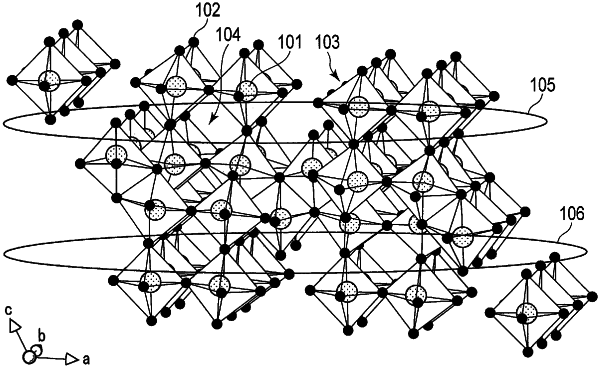| CPC H01M 4/485 (2013.01) [H01M 2004/027 (2013.01); H01M 2220/20 (2013.01)] | 12 Claims |

|
1. An active material comprising a crystal particle, the crystal particle comprising a niobium-titanium composite oxide,
the crystal particle comprising an A-type niobium-titanium composite oxide phase and a B-type niobium-titanium composite oxide phase in a state of distribution where a boundary is not observed within a primary particle of the active material, and where the A-type niobium-titanium composite oxide phase and the B-type niobium-titanium composite oxide phase are homogenized at a molecular level within the crystal particle,
a ratio ANb/ATi of a Nb abundance ANb to a Ti abundance ATi in the crystal particle satisfying 2.3≤ANb/ATi≤4.0, and
according to a powder X-ray diffraction spectrum using a Cu-Kα ray for the crystal particle, an intensity ratio Iβ/Iα of a peak intensity Iβ of a peak β appearing at 12.5°≤2θ≤13.0° attributed to the B-type niobium-titanium composite oxide phase to a peak intensity Iα of a peak α appearing at 8.5°<2θ≤9.0° attributed to the A-type niobium-titanium composite oxide phase is within a range of 0.1<Iβ/Iα≤2.0.
|